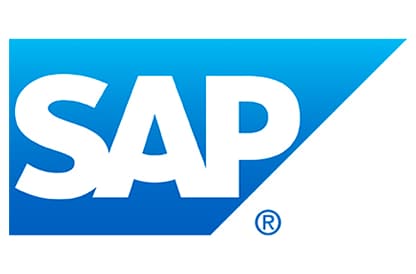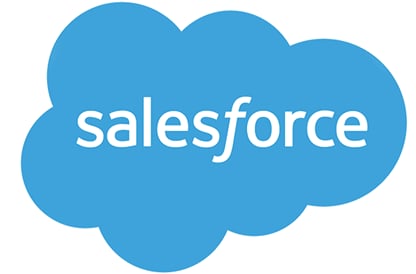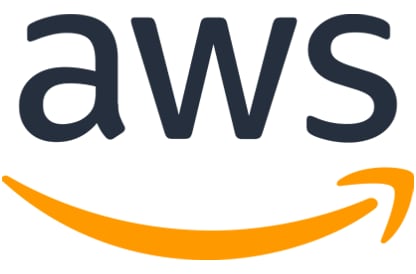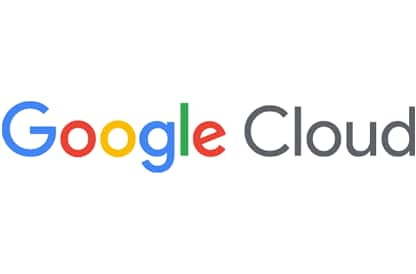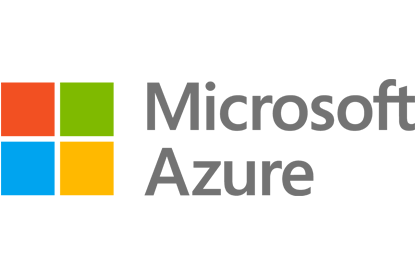Why OpenText
Why OpenText
Overview Why OpenText
OpenText brings decades of expertise to help you unlock data, connect people and processes, and fuel AI with trust
Manage and connect data
Unify data seamlessly across your enterprise to eliminate silos, improve collaboration, and reduce risks
AI-ready information
Get AI-ready and transform your data into structured, accessible, optimized information
Built-in security and compliance
Meet regulatory and compliance requirements and protect your information throughout its lifecycle
Empowering people
Overview Empowering people
OpenText helps people manage content, automate work, use AI, and collaborate to boost productivity
Customers
See how thousands of companies around the world are succeeding with innovative solutions from OpenText
Employees
Our people are our greatest asset; they are the life of the OpenText brand and values
Corporate Responsibility
Learn how we aspire to advance societal goals and accelerate positive change
Partners
Find a highly skilled OpenText partner with the right solution to enable digital transformation
How we compare
Content Management
Service Management
Deploy anywhere
Overview Deployment options
Explore scalable and flexible deployment options for global organizations of any size
Sovereign cloud
Local control. Global scale. Trusted AI
Private cloud
Your cloud, your control
On-premises
Free up resources, optimize performance and rapidly address issues
Public cloud
Run anywhere and scale globally in the public cloud of your choice
AI leadership
Overview Aviator AI
See information in new ways
OpenText™ Aviator AI
AI that understands your business, your data, and your goals
OpenText™ MyAviator
Say hello to faster decisions. Your secure personal AI assistant is ready to get to work
OpenText™ Business Network Aviator
Gain better insights with generative AI for supply chains
OpenText™ Content Aviator
Power work with AI content management and an intelligent AI content assistant
OpenText™ Cybersecurity Aviator
Improve your security posture with AI cybersecurity and agile threat detection
OpenText™ DevOps Aviator
Enable faster app delivery, development, and automated software testing
OpenText™ Experience Aviator
Elevate customer communications and experiences for customer success
OpenText™ Service Management Aviator
Empower users, service agents, and IT staff to find the answers they need
Aviator AI
Overview Aviator AI
See information in new ways
OpenText™ Aviator AI
AI that understands your business, your data, and your goals
OpenText™ MyAviator
Say hello to faster decisions. Your secure personal AI assistant is ready to get to work
OpenText™ Business Network Aviator
Gain better insights with generative AI for supply chains
OpenText™ Content Aviator
Power work with AI content management and an intelligent AI content assistant
OpenText™ Cybersecurity Aviator
Improve your security posture with AI cybersecurity and agile threat detection
OpenText™ DevOps Aviator
Enable faster app delivery, development, and automated software testing
OpenText™ Experience Aviator
Elevate customer communications and experiences for customer success
OpenText™ Service Management Aviator
Empower users, service agents, and IT staff to find the answers they need
Analytics
Overview Analytics
Predict, act, and win with real-time analytics on a smarter data platform
OpenText™ Aviator Search(AI)
Give users access to the answers they need, faster and easier, with multi-repository AI-based search that lets you contextualize everything from clicks to conversations
Business Network
Overview Business Network
Connect once, reach anything with a secure B2B integration platform
Content
Overview Content
Reimagine knowledge with AI-ready content management solutions
OpenText™ Content Aviator(AI)
Supercharge intelligent workspaces with AI to modernize work
Cybersecurity
Overview Cybersecurity
Integrated cybersecurity solutions for enterprise protection
OpenText Cybersecurity for SMBs & MSPs
Purpose built data protection and security solutions
OpenText™ Cybersecurity Aviator(AI)
Reinvent threat hunting to improve security posture with the power of agile AI
DevOps
Overview DevOps
Ship better software—faster—with AI-driven DevOps automation, testing, and quality
Experience
Overview Experience
Reimagine conversations with unforgettable customer experiences
Observability and Service Management
Overview Observability and Service Management
Get the clarity needed to cut the cost and complexity of IT operations
OpenText™ Service Management Aviator(AI)
Redefine Tier 1 business support functions with self-service capabilities from private generative AI
APIs
Overview APIs
Build custom applications using proven OpenText Information Management technology
OpenText™ API Services
Build it your way with OpenText Cloud APIs that create the real-time information flows that enable custom applications and workflows
Device and Data Protection
Overview Device and Data Protection
Protect what matters, recover when it counts
Unified Endpoint Management Tools
- OpenText™ Endpoint Management
- OpenText™ ZENworks Suite
- OpenText™ ZENworks Service Desk
- OpenText™ ZENworks Configuration Management
- OpenText™ ZENworks Endpoint Security Management
- OpenText™ ZENworks Full Disk Encryption
- OpenText™ ZENworks Endpoint Software Patch Management
- OpenText™ ZENworks Asset Management
Solutions
Trusted Data & AI
Overview Trusted Data & AI
Secure information management meets trusted AI
OpenText AI Data Platform
A unified data framework to elevate data and AI trust
OpenText Aviator Studio
A place where you can build, deploy, and iterate on agents in your data's language
OpenText Discovery
A set of tools to help ingest data and automate metadata tagging to fuel AI
OpenText Data Compliance
A suite of services and APIs that make governance proactive and persistent
OpenText Aviator AI Services
Professional services experts who help you on your AI journey
Information Reimagined
Overview Information Reimagined
Get greater visibility and sharper insights from AI-driven information management. Ready to see how?
Knowledge reimagined
Transform daily work with enterprise content management powered by AI
Service Management reimagined
Cut the cost and complexity of IT service management, AIOps, and observability
Connections reimagined
AI-powered B2B integration for supply chain success
Conversations reimagined
Drive value, growth, and loyalty with connected customer experiences
Engineering reimagined
Agile development and software delivery? It only seems impossible
Security reimagined
Cybersecurity for the Enterprise
Decisions reimagined
Unlock insights with AI data analytics
Artificial Intelligence
Overview Aviator AI
See information in new ways
OpenText™ Aviator AI
AI that understands your business, your data, and your goals
OpenText™ MyAviator
Say hello to faster decisions. Your secure personal AI assistant is ready to get to work
OpenText™ Business Network Aviator
Gain better insights with generative AI for supply chains
OpenText™ Content Aviator
Power work with AI content management and an intelligent AI content assistant
OpenText™ Cybersecurity Aviator
Improve your security posture with AI cybersecurity and agile threat detection
OpenText™ DevOps Aviator
Enable faster app delivery, development, and automated software testing
OpenText™ Experience Aviator
Elevate customer communications and experiences for customer success
OpenText™ Service Management Aviator
Empower users, service agents, and IT staff to find the answers they need
Industry
Overview Industry solutions
Improve efficiency, security, and customer satisfaction with OpenText
Energy and resources
Transform energy and resources operations with cloud, cybersecurity, and AI
Financial services
Boost customer experience, compliance, and efficiency with AI
Government
Reimagine your mission with government-secure information management
Healthcare and life sciences
Improve care delivery and patient engagement with AI-powered solutions
Legal
Modernize legal teams with automated, AI-powered legal tech solutions
Manufacturing
Modernize manufacturing operations and logistics to reduce costs and ensure compliance
Retail and consumer goods
Enhance consumer engagement with omnichannel retail solutions and AI
Enterprise Application
Overview Solutions for Enterprise Applications
Run processes faster and with less risk
Services
Services
Overview Services
Achieve digital transformation with guidance from certified experts
Professional Services
Modernize your information management with certified experts
Customer Success Services
Meet business goals with expert guidance, managed services, and more
Support Services
Turn support into your strategic advantage
Managed Services
Free up your internal teams with expert IT service management
Learning Services
Discover training options to help users of all skill levels effectively adopt and use OpenText products
Professional Services
Overview Professional Services
Modernize your information management with certified experts
Customer Success Services
Overview Customer Success Services
Meet business goals with expert guidance, managed services, and more
Support Services
Overview Support Services
Turn support into your strategic advantage
Managed Services
Overview Managed Services
Free up your internal teams with expert IT service management
Learning Services
Overview Learning Services
Discover training options to help users of all skill levels effectively adopt and use OpenText products
Partners
Find a Partner
Overview Find a partner
Find a highly skilled OpenText partner with the right solution to enable digital transformation
Cloud Partners
Overview Cloud Partners
OpenText partners with leading cloud infrastructure providers to offer the flexibility to run OpenText solutions anywhere
Enterprise Application Partners
Overview Enterprise Application Partners
OpenText partners with top enterprise app providers to unlock unstructured content for better business insights
Partner Solutions
Overview Partner Solutions
Discover flexible and innovative offerings designed to add value to OpenText solutions
Resources for Partners
Overview Resources for Partners
Discover the resources available to support and grow Partner capabilities
Support
Overview Customer Support
Get expert product and service support to accelerate issue resolution and keep business flows running efficiently
Resources
Overview Resources
Explore detailed services and consulting presentations, briefs, documentation and other resources
Choose your region:
Europe, Middle East and Africa
Asia–Pacific
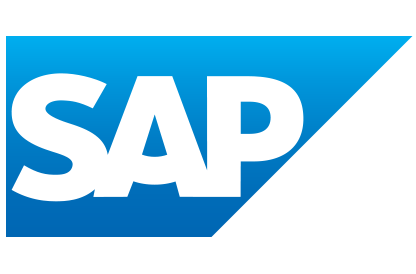 SAP
SAP
An enterprise software leader delivers consistent, compelling content to global audiences with OpenText™ Digital Asset Management for SAP® Solutions

About SAP

-
Locations:100 worldwide +
-
Employees:105,000 +
-
Revenue:€29.52 billion
Summary
Challenges
- SAP had digital assets stored in multiple separate repositories.
- SAP needed a central approach to digital asset management to enable employees to find compelling content faster.
Solution
- Consolidated 100,000 assets on a powerful, innovative, and highly scalable digital asset management solution.
- Supported over 35 million asset interactions per year for thousands of users.
Results
Empowers users to search in natural language
Optimizes campaigns based on data insights
Boosts asset reuse by up to 70%
Challenges
- Approximately 100,000 digital content assets in active use
- Multiple content repositories reduced digital asset management efficiency
SAP SE helps companies of various sizes and in multiple industries run better. To communicate the value of its solutions, services, and technology platforms, the company strives to create compelling marketing, sales, partner, and technical content, and manages and distributes the right digital assets to the right audiences at the right time.
Peter Chamberlain, senior director, marketing technology and transformation at SAP, elaborates: “To empower marketing, sales experts, and partners across SAP to have impactful conversations with customers and prospects, it’s crucial to connect them with high-quality content that helps them communicate their message effectively.”
Across SAP, content producers support marketing, sales, and partner teams with enablement materials, demand-generation assets, customer stories, white papers, and more. To help ensure consistency and quality across thousands of pieces of content, the company has established processes and workflows that support collaboration with both internal and external creative agencies to develop content that is relevant, compliant, and on-brand.
Chamberlain continues: “In the past, we used many separate repositories to store and manage our assets. We have around 100,000 pieces of content in active use across the business at any given time, and we saw a chance to simplify the landscape and help our teams find these resources faster by moving to a central platform.”
SAP was confident that replacing separate content repositories with a single platform would bring additional benefits such as optimizing content investment and reducing content duplication and infrastructure. As well as saving marketing and sales teams time searching for assets, a single point of control for content would make it easier for creators to publish materials, and for consumers to find and access the latest versions. It would also encourage greater reuse of assets, ultimately contributing to improved return on investment (ROI) for content production.
“We embarked on a project to create a single digital asset management [DAM] platform,” says Chamberlain. “The aim was to support end-to-end management of content and its associated metadata throughout the lifecycle, including publishing, cataloging, versioning, governance, and archiving. We were also keen to capture consumption data from the new DAM solution—helping us to understand how assets were being used and identify opportunities to leverage them more effectively.”

Flexibility and ease of integration make OpenText Digital Asset Management for SAP Solutions an effective solution for SAP.
Solution
SAP uses Digital Asset Management for SAP® Solutions to underpin SAP’s Digital Library. Based on a headless architecture, the solution enables SAP to continually enhance the front-end experience for its thousands of users.
Products deployed
-
OpenText™ Digital Asset Management for SAP® Solutions
Seamlessly integrate digital media into business processes with SAP
Selecting a flexible solution
Two of SAP’s key criteria for selecting Digital Asset Management for SAP Solutions were its flexibility and extensibility
“One of the key advantages of the way we have deployed the solution is that we can build our own content workflows on top of OpenText Digital Asset Management (DAM),” explains Chamberlain. “As a result, we can continually innovate our user experiences, channels, and tools without the need for time-consuming development work on the DAM technology behind the scenes.”
One platform, many channels
Today, the OpenText solution forms the basis of SAP’s Digital Library—the company’s single point of control for producing and distributing the essential content that helps SAP tell its story. The DAM platform is integrated with multiple content authoring systems, and source files are managed and hosted from a central location. As well as helping ensure that SAP’s creative agencies have full control over the source files for all assets, this approach means that new versions of assets are immediately available on multiple channels as soon as they are published.
“We have connected SAP’s Digital Library to 25 content syndication platforms,” says Chamberlain. “These platforms include our internal client reference and partner portals, as well as enablement and education tools for our sales teams. We store our assets in multiple formats, enabling us to optimize content for each of our platforms—an XML format is easier to use than a PDF when publishing a case study as a web page, for example. Our DAM solution allows us to deliver content in the optimal format for each channel but manage all these different formats as a single asset.”
Enabling effective search
To allow marketing, sales, and partner teams to find content effectively, SAP captures rich metadata for each asset—all based on a centrally managed terminology and taxonomy.
“To help our teams find relevant materials that resonate with customers and prospects, we want to allow them to search by as many different fields as we can,” Chamberlain continues. “Asset metadata is crucial to enable fine-grained search capabilities: for example, searching for all customer stories from a specific sector or that include certain SAP solutions. By using a central taxonomy management platform, we can include the required metadata fields and help ensure they are used consistently across the organization.”
Promoting employee self-service
To accommodate thousands of Digital Library users while keeping management workloads lean, the company delivers self-service capabilities within a strong governance framework. Using automated business rules, SAP helps ensure that assets such as customer stories are not published externally without the requisite approvals from the customer. The company also automatically removes assets from its repository at predetermined expiry dates, helping to contain storage costs and ensure effective content management for the long term.
“Over the years, we have built up a great deal of internal experience and expertise in the OpenText solution,” adds Chamberlain. “When we do need to answer a technical question, we have always found OpenText support to be knowledgeable and professional.”
By using OpenText to deliver the content repository that underpins our Digital Library, we can create, publish, and reuse compelling content, helping SAP communicate its message consistently, effectively, and cost-efficiently.
Results
Today, SAP manages and delivers content to over 100,000 users. Every year, the company’s DAM platform supports more than 35 million asset interactions, helping SAP share compelling content with global audiences and drive ROI by promoting content reuse.
Promoting new assets across the business
Since it first deployed OpenText Digital Asset Management for SAP Solutions, SAP has continued to innovate its DAM platform. The company has built rich capabilities on top of the OpenText solution, including smooth digital workflows to support content creation, production, and publishing, as well as apps to guide teams through campaign planning, publishing, and analysis.
“SAP teams leverage a large amount of content across the customer journey, and one of our goals is to help them find and use new assets as soon as they are live,” explains Chamberlain. “For our sales teams, we have developed a curator’s dashboard that automatically surfaces new assets such as customer stories and white papers. Generating internal exposure for assets in this way is a big advantage, as it helps us to maximize the business value of our investment in content production.”
Empowering users to search in natural language
Thanks to the flexibility and openness of the OpenText solution, SAP can tightly integrate the solution with its own technologies—shaping high-quality user experiences that help teams across the company rapidly find the assets they need. With the search and text option for SAP HANA®, the company leverages natural-language processing to interpret search queries, organize results by relevance and context, and auto-tag content during its creation.
“The search and text option for SAP HANA is helping to enhance our search capabilities in a number of areas,” says Chamberlain. “It can search metadata tags and the content of the assets themselves to select the most relevant results. Using full-text search, the Digital Library solution collects the most executed queries and proposes autocomplete results to the user. Auto-tagging was one of the features most requested by our users, and with text analysis capabilities in SAP HANA, we can support them on the first steps of content creation.”
Optimizing campaigns based on data insights
Using SAP Lumira® software, SAP analyzes workflow logs from the OpenText solution to measure how and where assets are being used—delivering valuable insights that help boost engagement.
“We can provide engagement scores for our assets, such as how many times a video has been watched, how many times a case study was downloaded, or how many slides were read in a deck,” Chamberlain elaborates. “Based on this information, our teams can adjust campaign assets on the fly—substituting lower-engagement assets for more compelling materials.”
Boosting asset reuse by up to 70%
By building on the OpenText solution over the past decade, SAP is simplifying search and discovery, making better-informed decisions about how best to deploy its assets, and encouraging asset reuse.
Chamberlain confirms: “On average, around 20% of our content is reused at some point throughout its lifetime—and for some asset types, we see reuse rates between 50% and 70%, which significantly boosts our ROI.”
Looking to the years ahead, the company plans to continue to enhance its Digital Library to support its stakeholders.
“Flexibility and ease of integration make OpenText Digital Asset Management for SAP Solutions an effective solution for SAP,” concludes Chamberlain. “By using OpenText to deliver the content repository that underpins our Digital Library, we can create, publish, and reuse compelling content, helping SAP communicate its message consistently, effectively, and cost-efficiently.”
Share your story

